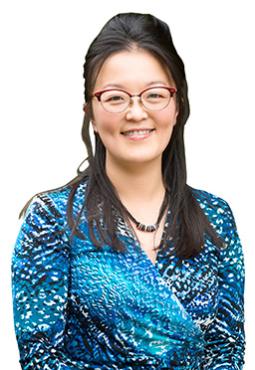Gastric, or stomach, cancer is relatively rare in the United States, striking about 27,000 people each year, accounting for less than 2% of all cancer cases.
But gastric cancer is a global scourge, the third deadliest cancer in the world. It afflicts more than a million people annually, primarily in Asian countries: China sees 450,000 cases a year, and South Korea has the highest overall stomach cancer rate.
What happens in Asia, however, doesn’t stay in Asia. Asians and Pacific Islanders make up the fastest-growing minority group in the U.S., and many bring with them cultural elements considered to be risk factors for gastric cancer. One major culprit is infection with the gut bacteria known as H. pylori — largely under control in the U.S. thanks to antibiotics, but still a significant threat in other parts of the world. The strongest known risk factor for gastric cancer, H. pylori infection can cause peptic ulcers and gastritis, and that constant inflammation can sometimes lead to stomach cancer. Asian immigrants who tend to eat salty, spicy, fermented and undercooked foods increase their chances of stomach irritation, which can compound inflammation from H. pylori. Add to that the custom of eating “family” style — everyone at the table sharing each other’s portions — and the risk of spreading H. pylori grows.
Michael Kim is a Korean American who speaks from experience.

It never occurred to Kim to get screened for gastric cancer. He was a healthy 49-year-old with no symptoms. But being of Asian ancestry — he was born in South Korea and came to the U.S. at age 2 — he was at risk. So, in late 2020, when he arranged for his first colonoscopy — a procedure recommended for all Americans starting at age 45 — a Korean friend in the medical profession strongly encouraged him to also have an endoscopy to look inside his stomach, something that’s routinely performed in South Korea for patients beginning at age 35.
The endoscopy, which was performed first, uncovered aggressive stomach cancer in its early stages. Kim canceled his colonoscopy appointment for later that day.
“I was in shock,” he recalled. “I asked myself, ‘Is this really happening?’”
He immediately headed to City of Hope, where a second endoscopy confirmed the diagnosis, and where he finally had his colonoscopy, which was negative.
Novel Therapies
While it’s never a “good” time to be diagnosed with cancer, Kim and other patients are benefiting from significant advances that were not available just a few years ago.
“There are more and more novel therapies out there,” said Yanghee Woo, M.D., director of the Gastroenterology Minimally Invasive Therapies Program and an associate professor in the Division of Surgical Oncology at City of Hope. “The field has exploded in the last five years, with new platforms amassing enormous genetic and other data.”
The knowledge base — especially in genetics — is expanding dramatically. For example, although most stomach cancer is not inherited, the small percentage that is can now be more effectively identified: Researchers have isolated some 100 mutations of the CDH-1 gene that point to a high risk of inherited gastric cancer.
Dozens of clinical trials are underway to evaluate the newest chemotherapy, targeted therapy and immunotherapy drugs. Among them are treatments that block the HER2 and VEGF proteins produced by some stomach cancer cells, which helps them grow. Checkpoint inhibitors like Keytruda (pembrolizumab) are also being studied as a treatment option.
“There is so much excitement,” added Woo. “Everything we dreamed of is happening right now.”
Progress in Surgical Techniques
By the time most stomach cancers are detected, drugs alone won’t be enough to treat it. About 60% of gastric cancer patients need surgery. But here too, there is progress and optimism.
Traditional “open” surgery is giving way to less invasive laparoscopic procedures that use much smaller incisions. Increasingly, these surgeries are being done robotically, a trend that Woo expects will continue.
“Seventy-five percent of the surgeries I do now are robotic,” she said, adding that she personally prefers open procedures because of the literal “hands on” factor, where she can touch the patient and remove the cancer by hand (in a typical robotic procedure, the surgeon is in another room, seated at a console and video screen, operating robotic instruments remotely). Nevertheless, “for the patients, whenever I can do it safely, I will offer robotics, because recovery is so much quicker.” One drawback: robotic surgery takes longer, so patients with weak hearts may not be good candidates.
The robotics are getting better, too. First-generation machines required multiple “ports” through which instruments could be inserted. Early versions of a “single” port robot were less than ideal, but that is changing. “Single port has improved significantly,” said Woo. The latest machines are approved for urinary and gynecological surgeries, and a clinical trial is about to begin to test their effectiveness in gastric cancer as well.
More and more surgical procedures are getting the benefit of 3D imaging guidance and, increasingly, artificial intelligence computer models to help spot tumors that might otherwise go undetected.
To treat Kim’s Stage 1 cancer, Woo performed a robot-assisted roux-en-y reconstruction (the name is French for “like a Y,” indicating the new path of the digestive system), in which two-thirds of his stomach was removed. He was able to go home three days later and, because his lymph nodes were clear, he needed no chemotherapy. Two years postsurgery now, Kim says he’s “doing great!”
A More Advanced Case
It was a different story — but an equally happy result — for Herman Mendoza, a 36-year-old printing press operator. Persistent heartburn and unexpected weight loss (he dropped 30 pounds) brought him to his local hospital. At first, because of his age and the mistaken belief that only older people get stomach cancer, no one suggested Mendoza get an endoscopy screening. That’s a shame, because after Asian Americans, people of Hispanic origin have some of the highest gastric cancer rates. Hispanic men and women are twice as likely to be diagnosed with stomach cancer, and twice as likely to die from it, compared to the white population — the difference, again, largely attributed to the higher incidence of H. pylori infection in the Hispanic population. By the time Mendoza’s cancer was finally detected, it would require extensive multimode treatment.
Genetics may also play a role in gastric cancer among Hispanics. Typically, cancer genes have mutations that can be targeted with medications. But one study discovered that nearly half the gastric tumors found in Hispanic patients had a specific molecular makeup that does not respond well to those drugs.
A friend pointed Mendoza to City of Hope and Woo, who devised a comprehensive plan involving chemotherapy to shrink the tumor, followed by robotic surgery to remove his stomach, spleen and pancreas, then more chemo post-op. (Studies have shown that such before-and-after chemotherapy can be significantly more effective than surgery alone.)
Mendoza marvels at the results.
“I woke up” after surgery,” he recalled, “and I saw the incision, maybe 2 1/2 inches. I couldn’t believe that my stomach was gone.”
Thanks to Woo’s plan, Mendoza’s cancer is gone, too. It has been three years now, and Woo says that’s a critical milestone. Recurrences, if they happen, usually occur in the first two years.
“I feel lucky and blessed,” said Mendoza, “that Dr. Woo and the people at City of Hope were put in my path.”
